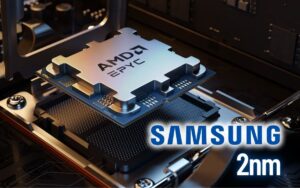
Despite the growing popularity and accessibility of OLED screens on TVs and especially on smartphones, the market for monitors with this technology still faces some challenges, mainly in relation to prices and the expectation of a reduction in these values.
In an interview with Canaltech, Marina Correia, Monitor Product Manager at Samsung Brazil, explained the difficulties faced by the company in making OLED monitors more accessible to consumers. According to her, despite the advantages that these monitors offer, the high cost of the parts continues to be an obstacle.
Read too:
Rumor: LG to abandon LCD production to focus on OLED
With national production, LG launches the UltraGear OLED monitor in Brazil: 27 inches and QHD resolution
The Promise of OLED Monitors
OLED monitors are often considered the future of the display market, especially among competitive gaming enthusiasts. Compared to traditional LCD monitors, OLED monitors offer faster response times, more vibrant colors, high contrast ratios, and a wider viewing angle, bringing a more immersive gaming experience.
One of the main advantages of OLED monitors is their structure, which does not require a backlight to illuminate the pixels, unlike LCD panels. This results in thinner and lighter monitors. Although OLED technology was already used in products aimed at professionals, its popularity grew significantly when it was adapted for the gaming segment, less than five years ago.
Pricing and adoption challenges

Here in Brazil, it is already possible to find some OLED monitor options, such as the Odyssey OLED G8 from Samsung itself, which was recently launched. But the price is still scary. Here, the new product was launched for R$11,999, showing that one of the main challenges of this technology is precisely this: the price.
Still, Marina Correia revealed that, although OLED monitors are expensive in Brazil, there is a growing demand for this type of product.
“Before launching a monitor in Brazil, we first understood the Brazilian market. We always look at where we have a gap, and in this case, we had a gap in high-resolution monitors, a high-performance 4K product. And then the Odyssey OLED G8 came to solve that. At trade shows and events, when we met content developers, we heard people saying that their PC was ready for 4K, but they couldn’t find a monitor. That was our place.”
She also highlighted an important point about using these monitors: to really take advantage of them you need to have a powerful computer.
“Not every setup is prepared for a 360 Hz OLED monitor with a 0.03 ms response time. When we talk about the gaming scenario, it is all integrated. If you have a premium monitor like OLED, you need a powerful GPU, RTX or AMD, an advanced processor, etc. And that’s not the case for most, although it has its market in Brazil, which is growing a lot,” she commented.
In addition, the cost of OLED panel components is a major factor. The technology requires a larger development team and advanced burn-in prevention solutions.
Will OLED monitors become cheaper?
One factor that could help bring down the price of OLED displays is the level of adoption of this technology by other brands. The more companies that are working with it, the easier it will be to find solutions to reduce costs (and with more competition, the more these companies will be really concerned about this).
In Brazil, Samsung, LG, Dell and ASUS are currently the main manufacturers offering OLED monitor options. The cheapest model available in the country is from LG, priced at less than R$6,000, while the first OLED monitors launched in Brazil cost more than R$10,000.
All does not seem lost. It is now possible to find OLED monitors at more affordable prices than they were about a year ago, but we still have to wait for a more significant reduction in these prices.
Marina mentioned that it is a trend for some panel technologies to become cheaper, but it is speculative to say when OLED in particular will become more affordable.
“It involves a larger team, in addition to preventive solutions such as burn-in, for example. So, for now, Samsung has no plans to put OLED in simpler models”
The good news is that manufacturers themselves are investing heavily in OLED technology, which could accelerate its popularization. Samsung recently announced a $3.1 billion investment to convert LCD panel factories to OLED. LG also announced a $1 billion investment to produce OLED displays, from panels for smartphones to TVs. China’s BOE is building a dedicated OLED production facility, which is expected to come on line in the next few years.
These investments indicate that while price reductions may take time, it is only a matter of time before OLED becomes more affordable for the average consumer. It is just not known how long.
Source: https://www.hardware.com.br/noticias/preco-dos-monitores-oled-nao-vai-baixar-tao-cedo-diz-samsung.html


